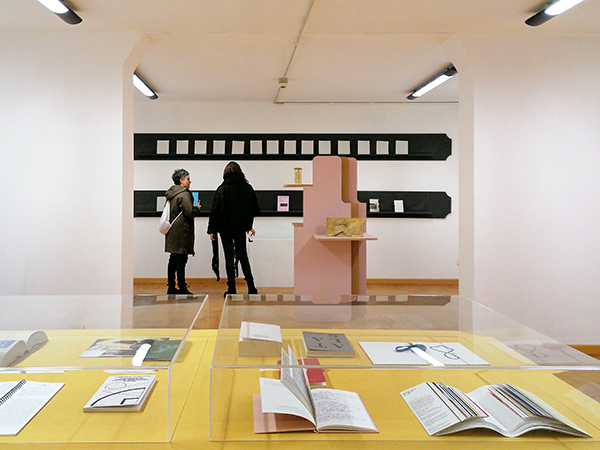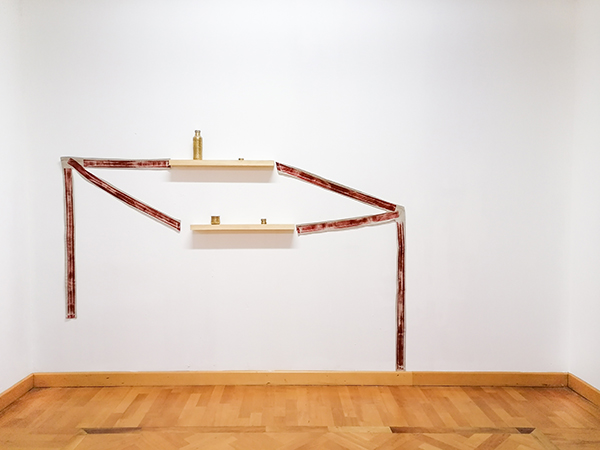Fonte: drosteeffectmag.com
REPLICA presents Spoken Narratives, a collection of artist books by Francesco Pedraglio, Juan de la Cosa
Droste Effect: This is the first year of REPLICA, and after the first year more concrete perspectives and willingness usually begin to consolidate. In short, it is time to draw conclusions. What would you tell us?
REPLICA: This project started with the right gear – from nothing, with two calls we started to collect several artist books and independent editions, such as catalogs and fanzines. A good number of these editions have been donated to the archive, others are on loan for the duration of the project. This initial collection has allowed us to look for a website, which is meant to be read as the digital dimension of the project. In fact, within the site, that is still in the final stages of implementation, you can access the documentation and filing of books in the archive. In addition, the site collects traces of the various activities carried out by REPLICA. Among these, it is worth mentioning the ongoing collaboration with ATPdiary, which supports the project through a bimonthly column called ATPreplica, where from time to time the books in the archive are presented and deepened – and this, when possible, is done by leaving the floor directly to the artists. A new and important collaboration started in January 2020 with Fondazione Rossi, which helps us to develop the project also on an international level. We should certainly remember one of our first collaborations, the one with the Associazione Progetto Città ideale, which allowed us to host our first exhibition project at Edicola Radeztky’s Multipli e Unici. The exhibition, Spoken Narratives, is still in progress, in collaboration with Norma Mangione Gallery. On display, beside a section curated by artist book collector Diego Bergamaschi, are the works and books of Francesco Pedraglio, together with a selection of volumes published by his independent publishing house Juan de la Cosa. Among the most challenging projects there is certainly the one we are carrying out with Fruit Exhibition, the independent publishing fair in Bologna. The Fruit Exhibition team has invited us to curate an exhibition related to travel and travel publishing, the main topic of this edition of the fair. Moreover, together with KABUL magazine and the Fruit Exhibition team, we are working on the realization of a part of the public program of the fair. Every project we are carrying out is always referred to the two main subjects of our research: artist books and archives. Both consolidate the possibility of reacting to traditional exhibition models, by allowing us to question the use of the display, to deepen our historical heritage, to reflect on contemporary practices and, above all, to establish an interdisciplinary discourse.


D.E.: You have recently opened an exhibition entitled Spoken Narratives. What role do writing and narratives play in your project, which is dedicated to artist books?
R: In this specific case, writing and narratives have been the subject of our research from the point of view of their performativity, an aspect that also touches the artist book as an object. On display are Francesco Pedraglio’s maquettes – sculptures that miniaturize real objects, such as a column, and have an engraved telephone number. By dialing this number, we can listen to a story told by the artist himself directly on our mobile phone. It is thanks to this engraving that these objects become Spoken Sculptures – talking objects, books in the shape of a micro monument, ready to tell a story written by the artist.
D.E.: In the exhibition, in addition to presenting works by Francesco Pedraglio, you have created a collaboration with collector Diego Bergamaschi. How did you select the artist books?
R: Immediately after the first draft of the exhibition project and confirmation by Francesco Pedraglio and Norma Mangione, we thought it would be interesting to involve an external but competent look on artist books. Thus, we decided to contact Diego Bergamaschi, who has a rich and heterogeneous collection of artist books and is able to take a look back on their historical legacy, even though he mainly focuses on contemporary productions. Together, we have selected a series of books capable of expanding the concept of the performativity of narration. To give some examples, among this selection of volumes there is also 10 elastic band launches, a book by Giuseppe De Mattia, where the performativity of the sign is central. In fact, the book collects ten drawings by the artist on unbound sheets: a sample of random shapes, generated in a free and random way, following the shape of a blue elastic band thrown on the ground, which is identical to the one that keeps the book cover bound. Other examples of the concept of the performativity of narration are certainly the two books by Mette Edverson that show the result of a practice of re-writing from memory. The artist, in fact, invited several figures to learn a book by heart, and then later invited the same people to rewrite it. In these two cases, the narrative becomes something blurred and personal, like memories. On the occasion of the exhibition, we created an agile catalogue with Diego Bergamaschi, in order to make the books displayed in cases accessible, through descriptions of the projects and images. We have already confronted ourselves in flawed ways with the realization of catalogs, although we have no aspiration to become a publishing house. The first is the catalog of the exhibition Pelle d’oca d’oca, which also contains a precious unpublished story by Luca Scarlini. The second is the catalog of Senza Bagno, the exhibition project curated by Simone Camerlengo in the spaces of Monitor Gallery, where we contributed with the writing of a text and the editing of various published content. With him, we created the catalog.

D.E.: What are your plans for the future?
R: Surely we want to consolidate and implement the relationships that we are already pursuing. Then, as already mentioned, we are working on a challenging exhibition, which will involve different figures including collectors, curators, galleries and several independent spaces in Bologna. The core of the exhibition will be presented and set up at MAMbo and, although divided into sections, the main theme will be travel publishing. The public program organized in collaboration with Fruit Exhibition and KABUL will include four talks on mobility, migration, borders, cartography, urban planning, anti-institutional and imaginative practices and, of course, artist books. Another project that we care about is the realization of the first catalog of REPLICA’s activities and its collection. The catalog will be published in 2020 by Postmedia Books. Among the things that are motivating us the most is certainly the trust that we are finding from artists and publishers – who have also done their best to give us their books. The archive is therefore in continuous expansion. For this reason, we are also thinking about the possibility of finding a more suitable headquarters in the city of Milan, especially to ensure a service and greater usability of the archive itself. Among our great aspirations is certainly that of being able to create an institutional exhibition and to export REPLICA abroad. That said, in order to not stop thinking about this format, and on the display, we decided to invite architects’ studios to present sketches, projects and images with book display solutions during the summer period. The “table” on which to display these proposals will be our Instagram page.


Tag: art fair, drawing, interview, publishing, sculpture
Artist: Francesco Pedraglio
City: Milan
Venue: Villa Vertua Masolo
Curator: Diego Bergamaschi, REPLICA
